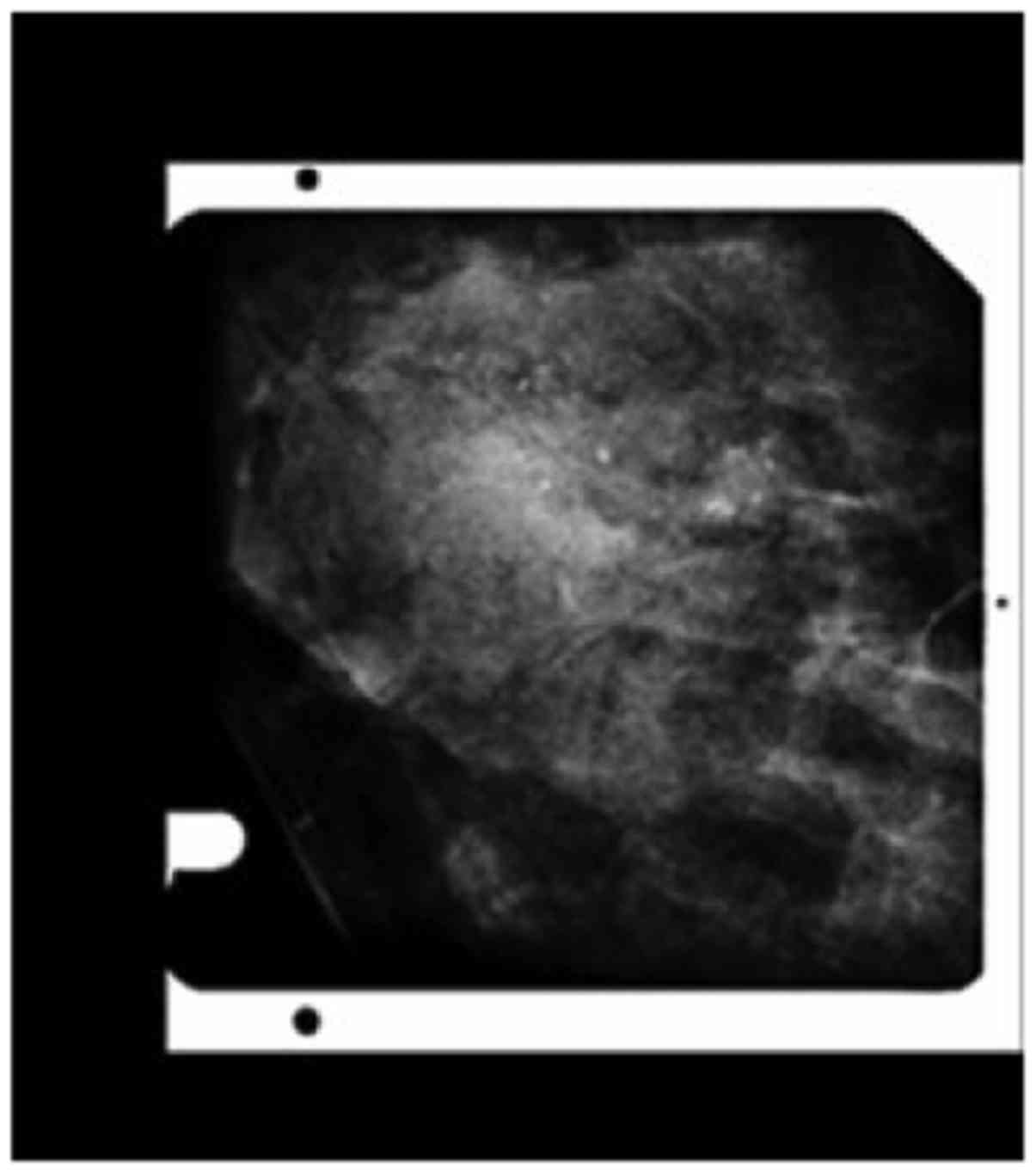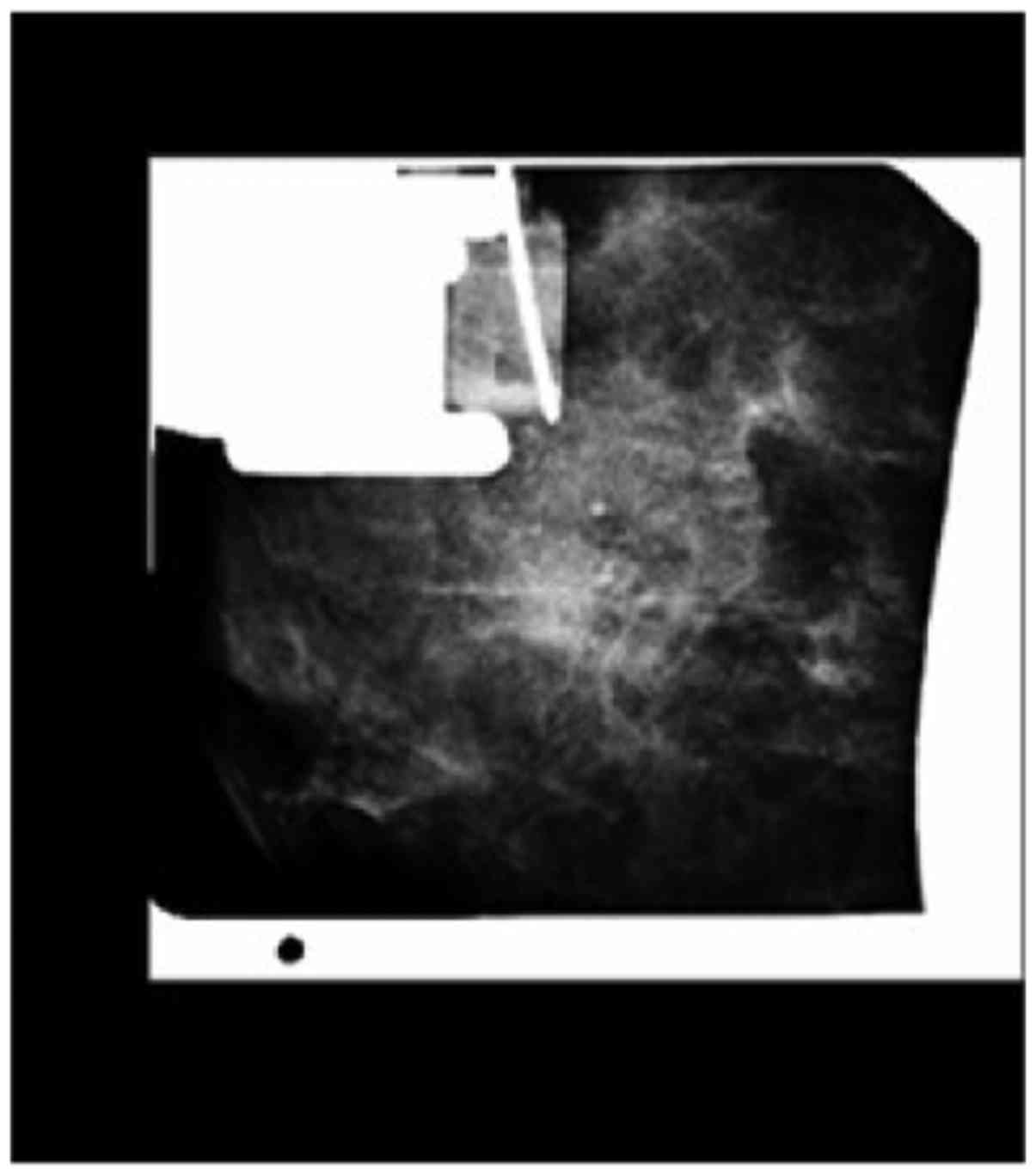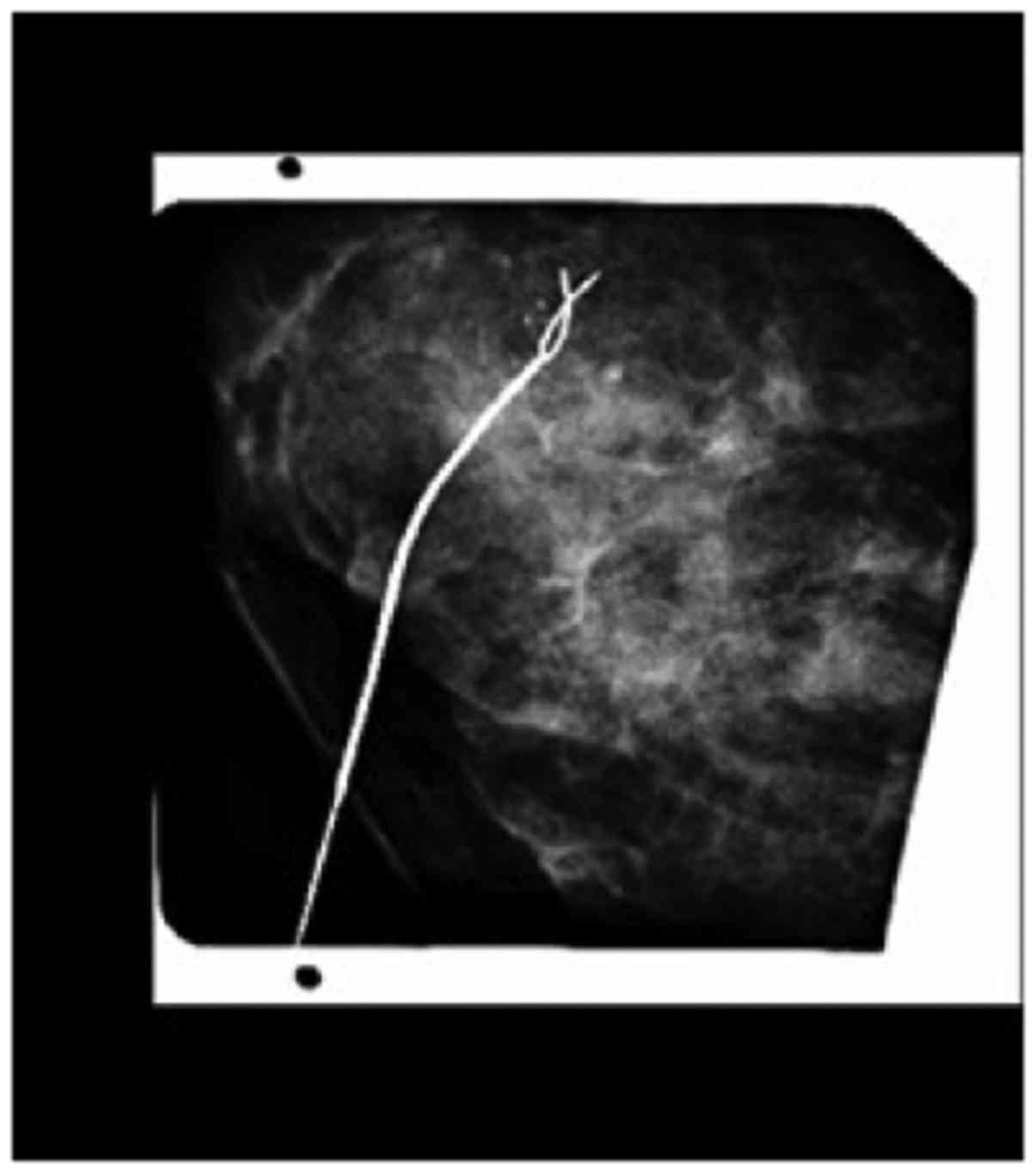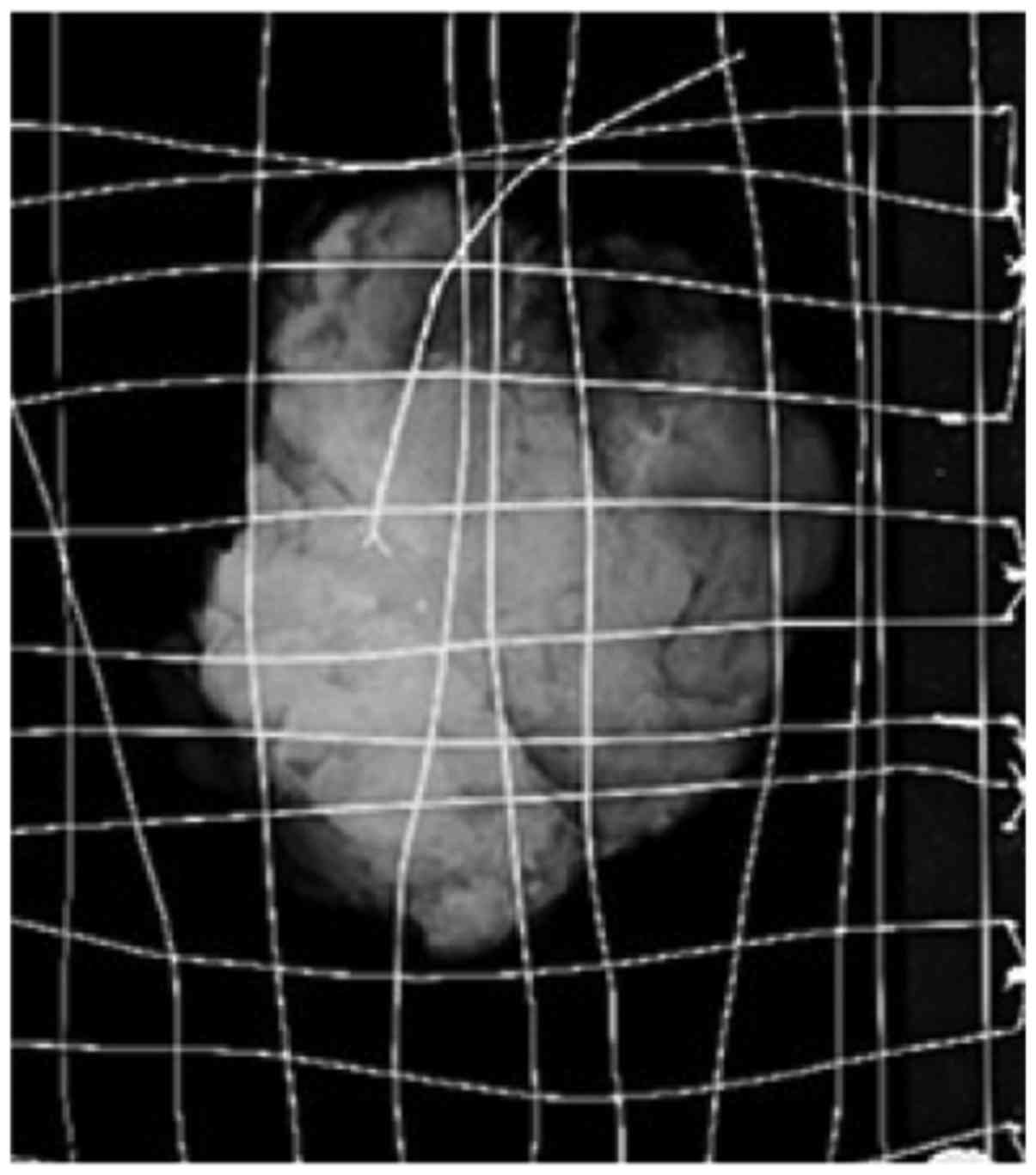Application of three-dimensional wire localization and orientation in the resection of non-palpable breast lesions
- Authors:
- Published online on: April 10, 2017 https://doi.org/10.3892/ol.2017.6014
- Pages: 4013-4016
-
Copyright: © Li et al. This is an open access article distributed under the terms of Creative Commons Attribution License.
Metrics: Total
Views: 0 (Spandidos Publications: | PMC Statistics: )
Total PDF Downloads: 0 (Spandidos Publications: | PMC Statistics: )
Abstract
The aim of the present study was to compare the application value of the 3D stereo wire localization technique guided by a full digital breast X‑ray machine, and general location technique in the resection of breast non‑palpable lesions. A retrospective analysis of the clinical data of 80 patients with abnormal findings for non‑palpable breast molybdenum target X‑ray was conducted between June, 2011 and July, 2014. The patients were divided into two groups: 40 cases with a general location of lesions identified by perturbation axial + standard lateral radiograph to guide the clinical operation biopsy (group A); and 40 cases with a general location of lesions identified by the 3D stereo wire localization method to guide the clinical operation biopsy (group B). The one‑time success rate of the resection of breast lesions of the two groups of patients was compared. Both groups of patients completed the operation. Of the 40 cases in group A, 33 cases had one‑time complete resection of lesions, 5 cases had incomplete resection with the second resection, and the lesions of 2 cases were not excised and the one‑time success rate of the breast lesion resection was 82.5%. Of the 40 cases in group B, lesions of 38 cases were one‑time complete resection and 2 had vagal reaction; thus, the one‑time success rate of breast lesion resection being 95%. Compared to group A, the one‑time success rate of breast lesion resection of group B was statistically and significantly higher (χ2=3.638, P<0.05). In conclusion, the 3D stereo wire localization technique guided by the full digital breast X‑ray machine for the excision of non‑palpable breast lesions has high positioning accuracy with small operation excision scope. It is therefore an effective method that can be utilized for the qualitative diagnosis of non-palpable breast lesions.













